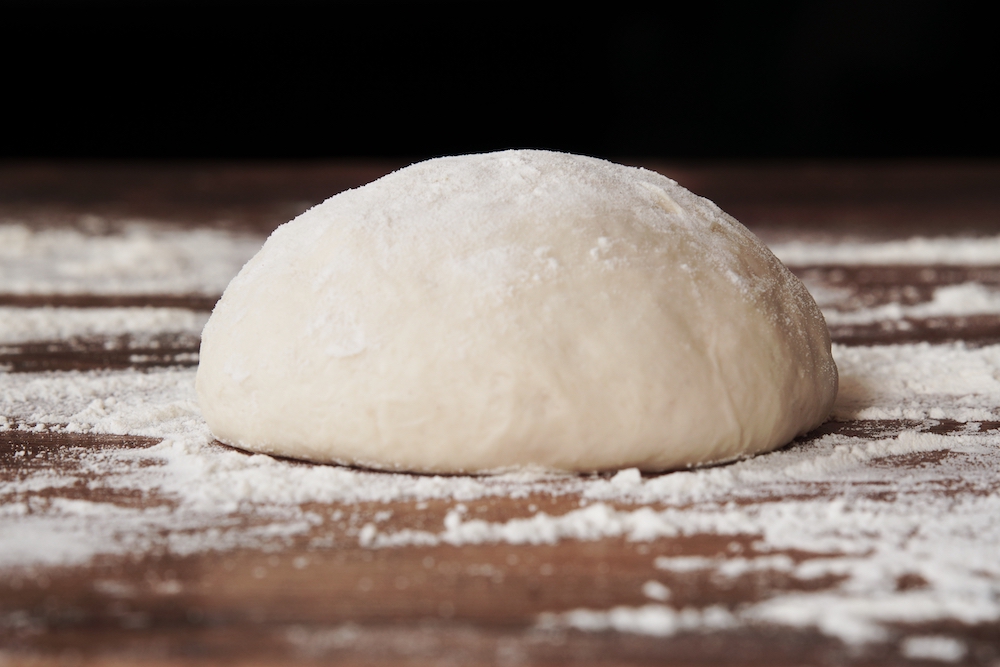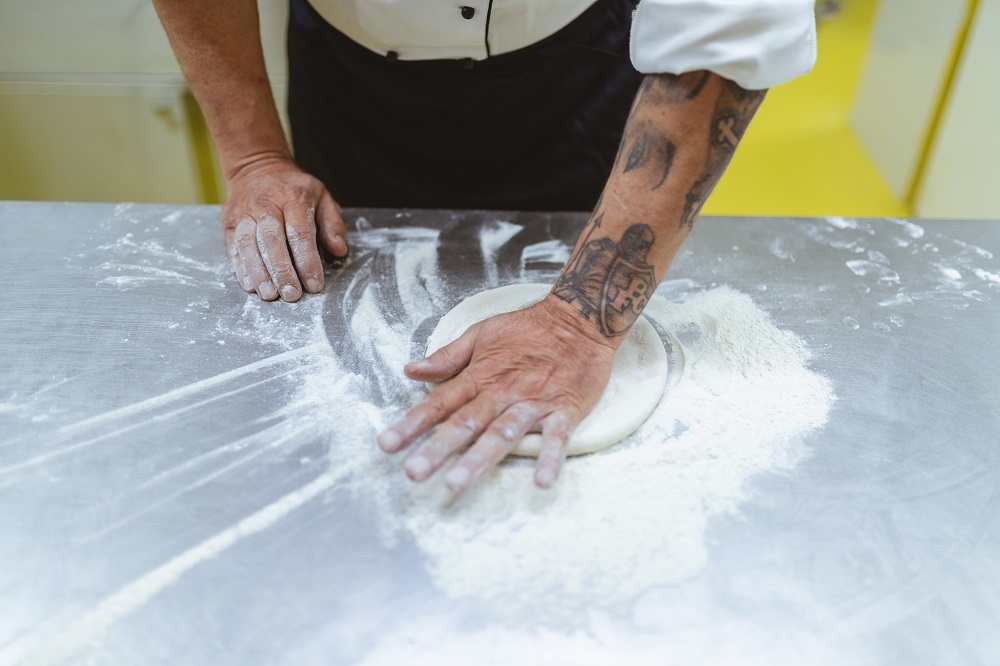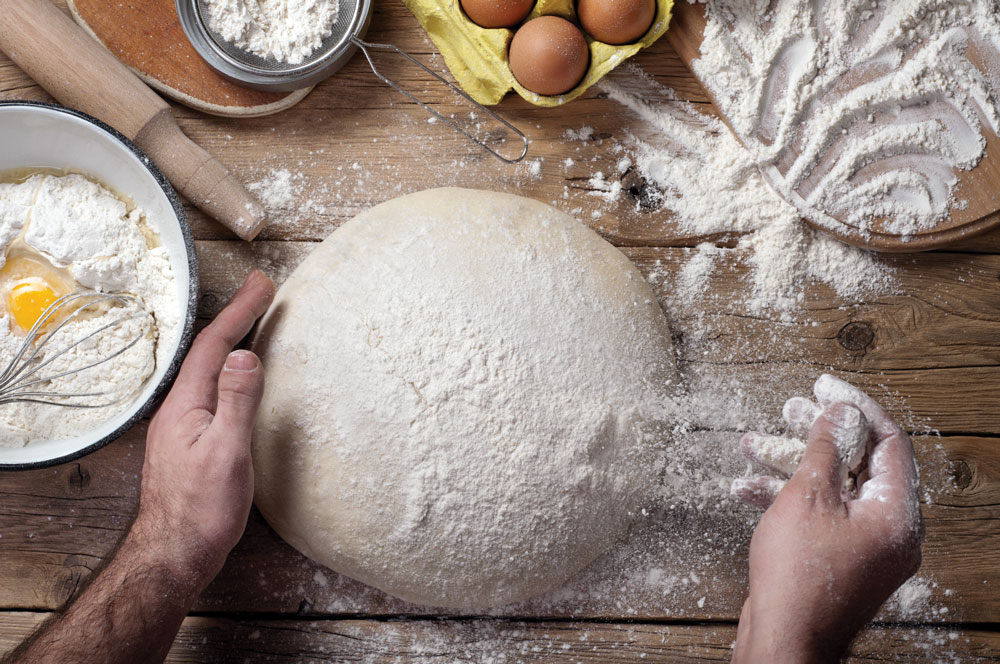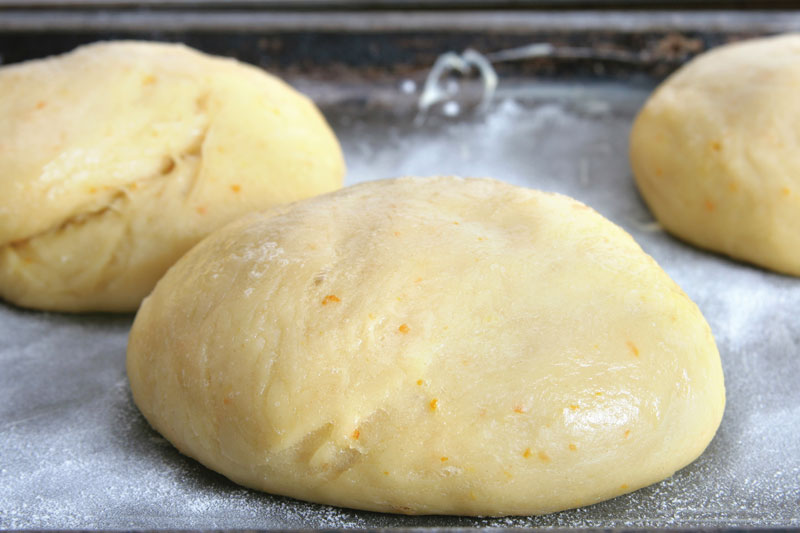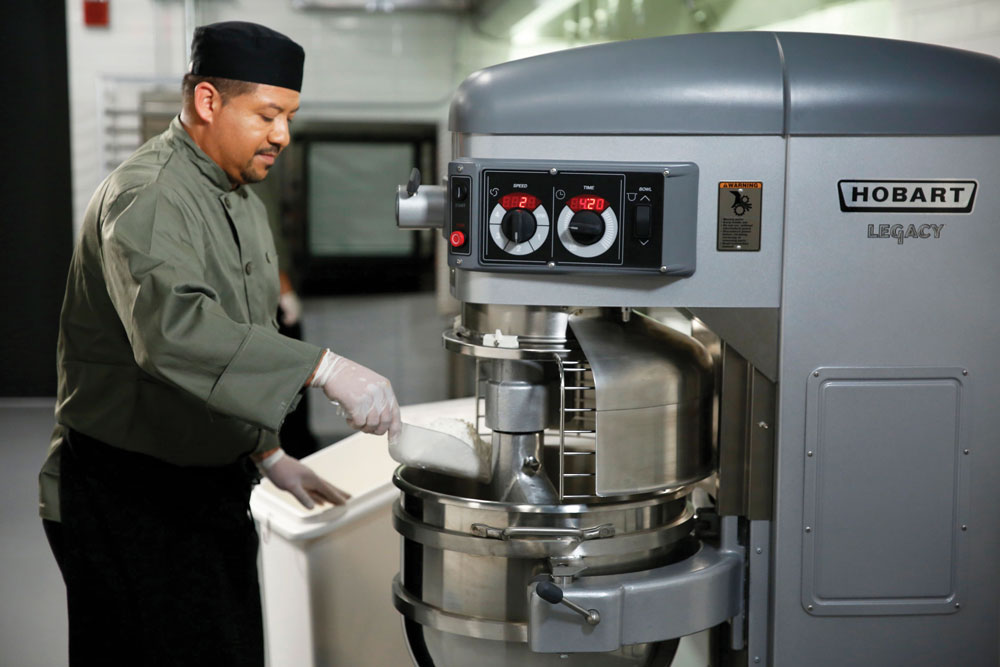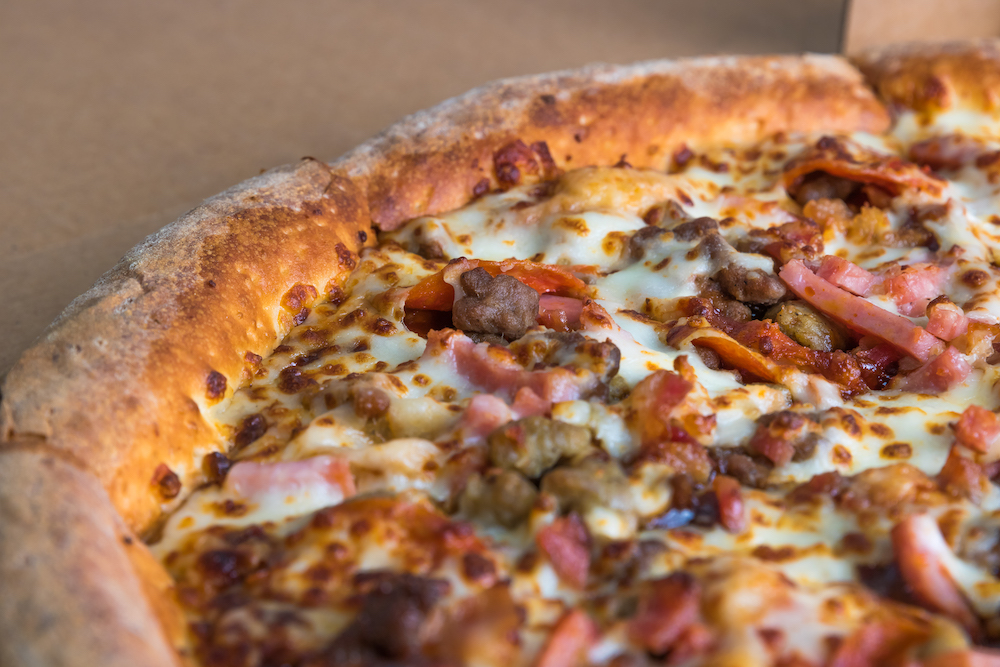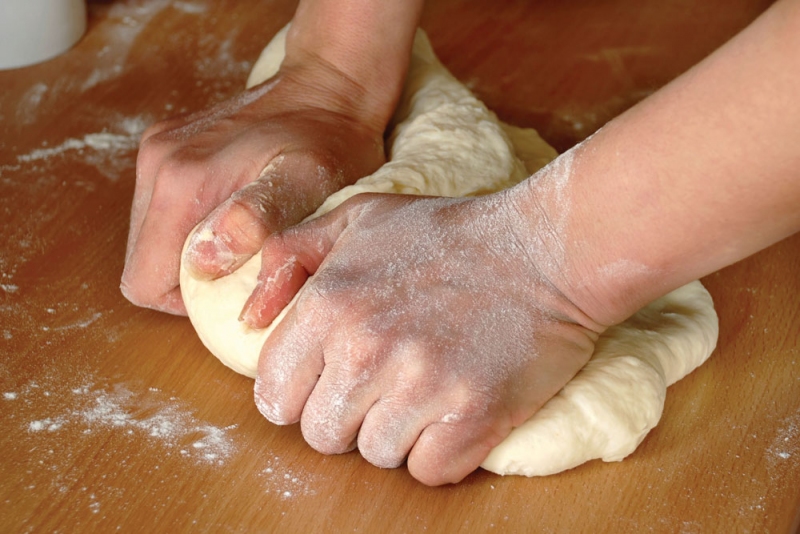 I’m sure that, by now, most of you have wondered if the price of flour will ever come back down again. For many of us, it can’t come down fast enough. Our bottom lines aren’t just hurting; they’re in serious trouble. With the escalating price of cheese, meats, and now tomatoes and fresh vegetables, flour seems to be the only ingredient that we have any sense of control (however remote) over. We can shop around for better flour prices, and we can occasionally pick up a good buy at a club store but, for the most part, even these prices have gone right through the proverbial roof.
I’m sure that, by now, most of you have wondered if the price of flour will ever come back down again. For many of us, it can’t come down fast enough. Our bottom lines aren’t just hurting; they’re in serious trouble. With the escalating price of cheese, meats, and now tomatoes and fresh vegetables, flour seems to be the only ingredient that we have any sense of control (however remote) over. We can shop around for better flour prices, and we can occasionally pick up a good buy at a club store but, for the most part, even these prices have gone right through the proverbial roof.
I know that many of you are looking to sidestep flour costs by using some other type of flour. The bad news is, you can’t blend other types of flour into your wheat flour to come up with a lower-cost alternative.
However, you can very effectively blend any number of different types of flours into your wheat fl our to make some truly unique pizza crusts with different flavor and textural properties from your regular white flour crusts, and charge more for these.
Before making any hasty plans to switch, we need to have a full understanding of the flour that we presently use. Wheat flour is a rather unique product in that it is made up of several different groups of proteins, two of which are vitally important to the making of pizza. These protein groups are glutenin and gliadin. When hydrated with water and agitated (mixed), they produce the structure-forming material in our dough, which we call gluten. Gluten is the material that holds dough together, allowing it to be sheeted, pressed, stretched and tossed without coming apart. It also contributes to the bite, or chewiness, of the baked pizza. As you can see, it is responsible for many of the characteristics that we take for granted in a pizza crust.
Looking at Alternatives
Other grains also contain these specific gluten-forming proteins, but they are present in such a low quantity that they make even forming dough somewhat problematic, not to mention trying to shape it. These cereal grains are rye, barley, and the wheat-rye cross, triticale. While rye flour can be used to make pizza, the rye dough is very sticky and weak, making it difficult to handle or shape—and keep in mind that rye flour of any type is in extremely short supply, and the price is about double of wheat flour.
Semolina flour is another kind of fl our that has gluten-forming proteins, but the type of gluten derived from durum flour is extremely tight, not very elastic or stretchable. This characteristic makes for dough that is difficult to shape well, and has a lot of memory. Also, after baking, this flour can impart extreme toughness to the finished crust. Again, as luck would have it, semolina flour is in tight supply, reflected by its price—nearly double that of a regular high-protein wheat flour.
Barley flour contains gluten-forming proteins, but again the level of gluten-forming protein is so low that the resulting doughs are extremely weak and sticky, plus, as you might expect, the cost is significantly higher than even our most costly wheat flours.
Doing the Math
When making a blended flour crust, you can add any of the nonwheat fl ours at replacement levels of up to 25% of the total wheat flour, so if you were using 50 pounds of wheat flour, you could replace up to 12.5 pounds of it with one or more of these other fl our types to produce a uniquely flavored crust.
Some available non-wheat flours are:
- Triticale
- Durum semolina
- Barley
- Rye
- Buckwheat
- Corn flour
- Rice flour
- Quinoa
- Amaranth
Others that can be incorporated into the dough formulation to provide uniquely flavored crusts or crusts with a “healthy” or exotic-sounding appeal include:
- Flaxseed meal
- Soy flour
- Sorghum flour
- Oat flour
- Spelt flour
Something to keep in mind when adding any of these products: They will exhibit an affinity for water in much the same way that the flour does; in many cases, it may actually be greater than that of flour. A good way to check for this (to determine how much water will need to be added to the dough) is to place a known quantity, such as 10 ounces, of the nonwheat flour material into a small bowl, then add 5 ounces of water and stir until the water is mixed into the material. If the resulting paste is too thick and/or too dry, add another ounce of water and stir in. Continue doing this until the material looks to be well-hydrated, and allow the mix to hydrate for 60 minutes; then check it again for consistency and add more water if necessary. Remember to allow the material to hydrate again for another hour before checking it for correct hydration.
When the material has the consistency of very thick oatmeal, it is properly hydrated. You can calculate the absorption percent by dividing the weight of water added by the weight of the nonwheat flour used, and then multiplying by 100. For example, if you started with 10 ounces of nonwheat material, and you ended up adding 7 ounces of water before it was fully hydrated, you would divide 7 by 10 and multiply by 100—in this case, 70% absorption. To use this in calculating your dough absorption, you would multiply the white fl our weight by 0.56 to fi nd the correct absorption for that portion of the flour blend, and then you would multiply the nonwheat flour weight by 0.70 to find the correct absorption for that portion of the flour blend. Add up the two weights and you will have the correct amount of water to add to the dough with that particular flour blend.
 Other Considerations
Other Considerations
When formulating dough to include any of these nonwheat flours, it is a good idea to experiment a little on small-size batches to determine what changes might be needed to complement the nonwheat flour. For example, in many cases we find that an increase in sweetness may be beneficial. In this case, the type of sugar used, such as honey, brown sugar, molasses or malt syrup, could be an important consideration, as it can influence the flavor of the crust, as well as the perceived sweetness or even the perception of healthful, rustic or natural to the consumer. Occasionally, we also find that the use of butter, margarine or butter-flavored oil (instead of the traditional olive oil) can have a significant impact upon the flavor of these crusts. This is especially true when flaxseed meal, oat flour, barley flour or soy flour is used.
Another consideration when using a wheat and nonwheat flour blend: The dough will be somewhat weaker than a normal white flour dough. This means that the dough mixing time will probably be less. In this case, be sure to mix the dough just until a smooth dough appearance is achieved, and then take the dough directly to the bench for scaling and balling. To use the dough on the same day, put the dough into plastic dough boxes and lightly oil the tops of the dough balls, then stack and nest the boxes and allow them to set at room temperature for 90 minutes before forming the dough balls into pizza skins. For a more traditional, overnight refrigerated storage of the dough, cross-stack the filled dough boxes in the cooler for 90 minutes, and then down-stack the boxes and nest them to prevent drying. Allow the dough to remain in the cooler for 18 to 24 hours. To use the dough, remove a quantity of dough sufficient for a three-hour period of time, and place at room temperature to temper for 2 hours. Then begin shaping into dough skins. The dough will remain good to use over the next three hours. Any unused dough may be opened into skins, placed onto screens and held in the cooler for several hours until needed for making pizzas. Due to the weakness of these doughs, it is not recommended that they be held in the cooler for more than one day.
When making a pizza with any of these crusts, you may also need to experiment with the baking time. Since these crusts will be more dense than your regular white flour crusts, they should be allowed to bake for a slightly longer time, ideally at a lower temperature (450° to 500°F), assuming you’re using a deck oven—but, in most cases, for practical purposes, we will want to keep the oven settings the same as we use for our regular pizza production. If this is the case, consider baking these special pizzas on a screen or a baking disk in your deck oven, as this will allow for a longer baking time without burning the pizza, and then “deck” the pizza for the last 45 to 60 seconds of baking. (“Decking” involves removing the pizza from the screen or disk and placing it directly on the oven hearth to further crisp it.) If you use an air impingement oven, you may only need to extend the baking time by 30 to 60 seconds to correct for the denser, heavier dough characteristic. To effectively accomplish this, you might be able to slow down one side of your conveyor if you have a split conveyor, or, as most operators do, simply push the pizza back into the oven as it exits for the additional baking time (though this is sometimes easier said than done, especially on a busy Friday or Saturday night).
While none of these approaches will help you to reduce the cost of your flour, they may help you to develop some new or different offerings that will command a better price, thus helping your bottom line. Or the right combination might appeal to a different group of customers that you didn’t previously attract, thus further building your customer base, which should also help. In these trying times, we need all the help we can get with those bottom-line numbers.



